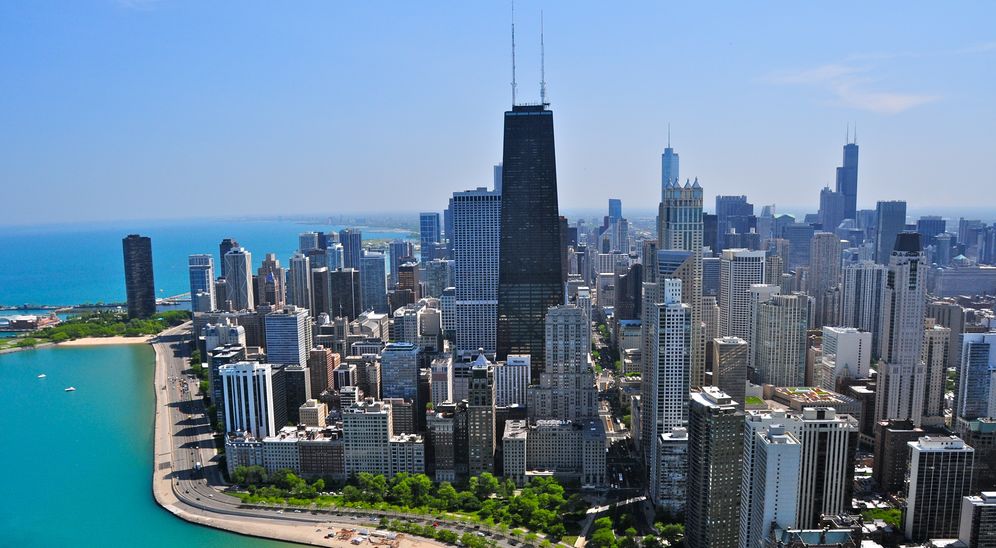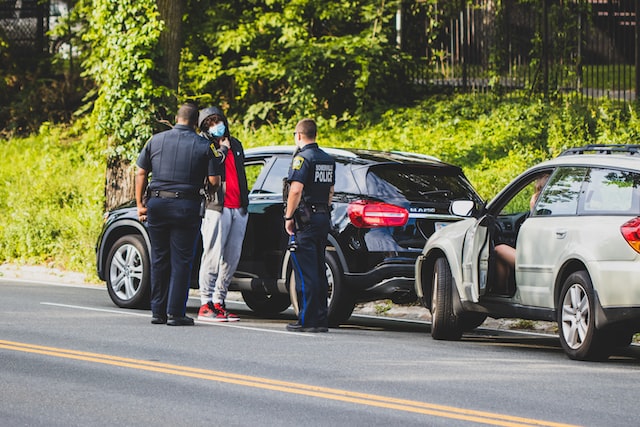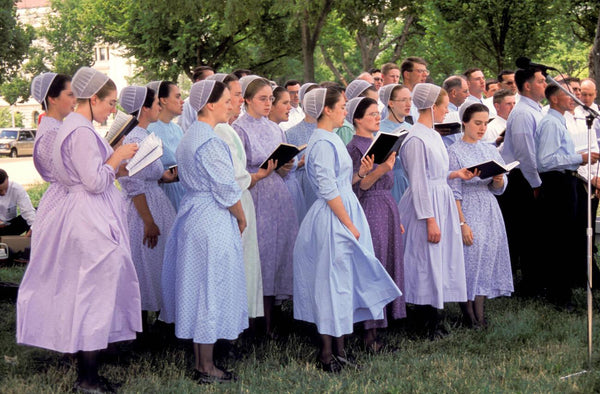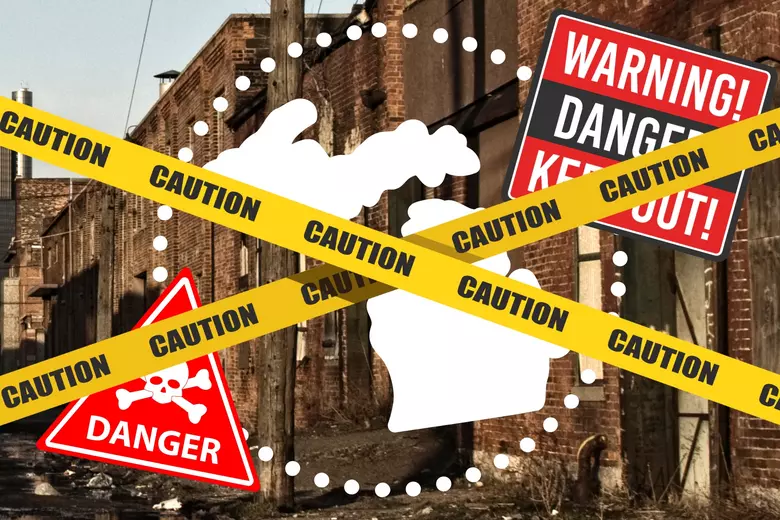Now Reading: Navigating the Windy City: A Guide to the Dangerous Parts of Chicago
-
01
Navigating the Windy City: A Guide to the Dangerous Parts of Chicago
Navigating the Windy City: A Guide to the Dangerous Parts of Chicago

Chicago is a vibrant, sprawling metropolis known for its stunning architecture, deep-dish pizza, and rich history. Like any major city, it has a complex fabric of neighborhoods, each with its own unique character. While millions of residents and tourists safely enjoy all the city has to offer, it’s also practical to be aware of areas with higher crime rates.
Understanding the dynamics of the dangerous parts of Chicago is not about fear-mongering; it’s about being informed. This guide aims to provide a balanced, data-driven look at these neighborhoods, exploring the factors that contribute to crime and offering a clearer picture of the city’s safety landscape. We’ll look at specific areas, discuss the types of crime that are most common, and provide context to help you navigate Chicago with confidence.
Key Takeaways
- Chicago’s crime is not spread evenly; it is highly concentrated in specific neighborhoods, primarily on the South and West Sides.
- Neighborhoods like West Garfield Park, Englewood, and Washington Park consistently show higher rates of both violent and property crime.
- Factors such as poverty, unemployment, and lack of resources are deeply linked to the higher crime rates in these areas.
- While statistics are important, they don’t capture the full experience of a neighborhood, which is home to many resilient communities and positive local initiatives.
- Awareness and common-sense safety practices are key to safely navigating any urban environment, including Chicago.
Understanding Crime Statistics in Chicago
Before diving into specific neighborhoods, it’s crucial to understand how crime is measured. Crime data can be complicated. Statistics from the Chicago Police Department, for example, provide raw numbers on reported incidents, from homicides and assaults to theft and burglary. These are often presented as “per capita” rates (per 100,000 people) to allow for fair comparisons between areas with different population sizes. It’s important to remember that these numbers reflect reported crimes and don’t always tell the whole story.
Some crimes go unreported, and statistics can fluctuate yearly. When we talk about the dangerous parts of Chicago, we are referring to neighborhoods that consistently show statistically higher rates of violent and property crime compared to city and national averages. These statistics are a tool for awareness, not a final judgment on the people or communities within these areas.
The Most Dangerous Parts of Chicago: A Closer Look
Several neighborhoods are frequently cited in discussions about crime in Chicago. These areas face significant systemic challenges that contribute to higher crime rates.
West Garfield Park
Located on the West Side, West Garfield Park often appears at the top of lists concerning the dangerous parts of Chicago. This neighborhood has long struggled with high rates of violent crime, including shootings and homicides. The challenges here are deeply rooted in economic hardship, with high unemployment and poverty rates being significant factors.
The area has experienced decades of disinvestment, leaving residents with fewer opportunities and resources. However, it’s also a community with a rich history and dedicated residents working to create positive change. Local organizations are actively involved in violence prevention programs and community-building efforts, aiming to address the root causes of crime and build a safer future for the neighborhood.
Englewood
Englewood, on the city’s South Side, is another neighborhood that faces immense safety challenges. It frequently records one of the highest violent crime rates in the city. The area grapples with issues like gang activity, which drives much of the violence. Like West Garfield Park, Englewood’s struggles are connected to a history of economic decline and systemic neglect.
Vacant lots and boarded-up buildings are common sights, reflecting the departure of businesses and residents over the years. Despite these obstacles, Englewood is home to a strong sense of community. Groups like the Resident Association of Greater Englewood (R.A.G.E.) are working tirelessly to revitalize the area, promote positive stories, and advocate for the resources their community deserves.
Washington Park
Situated on the South Side near the University of Chicago, Washington Park is a neighborhood of contrasts. It boasts a beautiful, historic park designed by Frederick Law Olmsted, yet it struggles with one of the highest violent crime rates per capita in the city. This disparity highlights a common theme in Chicago: a neighborhood’s assets and beauty can coexist with serious safety concerns.
Property crime is also a significant issue in Washington Park. The proximity to more affluent areas sometimes makes it a target for theft and burglaries. The community is working hard to bridge this gap, leveraging its cultural assets and historic importance to drive investment and improve public safety for all its residents.
Factors Contributing to High Crime Rates
Understanding why some areas become the dangerous parts of Chicago requires looking beyond the crime statistics themselves. Several interconnected socioeconomic factors play a pivotal role.
Socioeconomic Disparities
Poverty is one of the strongest predictors of crime. Neighborhoods with limited access to good jobs, quality education, and affordable housing often experience higher levels of desperation and stress, which can lead to criminal activity. Decades of systemic inequality and disinvestment in certain parts of the city, predominantly on the South and West Sides, have created environments where crime can flourish.
Lack of Opportunity
High unemployment rates, especially among young people, are a major contributing factor. When legitimate pathways to economic stability are scarce, the lure of illicit activities can become stronger. The lack of local businesses and job prospects in neighborhoods like Austin and North Lawndale means residents have to travel farther for work, and there are fewer positive community hubs to anchor the neighborhood.
Gangs and Drug Trafficking
Organized gang activity is a significant driver of violent crime in Chicago. Disputes over territory for drug trafficking often erupt in violence, with innocent bystanders sometimes caught in the crossfire. These criminal networks often target and recruit vulnerable youth who see few other options for belonging or financial gain, perpetuating a tragic cycle of violence. For more in-depth analysis of global economic trends that can impact urban areas, you can explore resources like those found at Forbes Planet.
Crime Statistics Breakdown: A Comparative Table
To put the situation in perspective, here’s a look at how crime rates in some of these neighborhoods compare. The numbers below represent the approximate number of violent crimes per 100,000 residents and are based on publicly available data, which can vary by year.
|
Neighborhood |
Violent Crime Rate (per 100k) |
Property Crime Rate (per 100k) |
|---|---|---|
|
West Garfield Park |
4,200 |
7,100 |
|
Englewood |
3,800 |
6,500 |
|
Washington Park |
3,950 |
9,900 |
|
Chicago Average |
950 |
3,200 |
|
National Average |
380 |
2,100 |
Note: These figures are illustrative estimates to show scale and can change based on the reporting year and data source.
As the table shows, the rates of both violent and property crime in these areas are dramatically higher than the city and national averages. This data underscores why these locations are often identified as the dangerous parts of Chicago.
Safety Beyond the South and West Sides

While the South and West Sides contain most of the high-crime areas, it’s a misconception that the rest of the city is completely free of crime.
North Side and Downtown Considerations
Neighborhoods on the North Side, like Lakeview and Lincoln Park, and ares in and around the Loop (downtown) have significantly lower rates of violent crime. However, they are not immune to property crime. Theft, car break-ins, and burglaries are more common in these denser, more affluent areas. The bustling nightlife and tourist activity can also lead to isolated incidents of robberies or assaults. The key takeaway is that vigilance is necessary everywhere. Even in “safer” neighborhoods, it’s wise to be aware of your surroundings, secure your belongings, and avoid walking alone late at night in unfamiliar places.
Practical Safety Tips for Navigating Chicago
Whether you’re a resident or a visitor, practicing common-sense safety is the best way to enjoy the city while minimizing risk.
- Be Aware of Your Surroundings: Always pay attention to who and what is around you. Avoid distractions like looking down at your phone, especially when walking alone.
- Stick to Well-Lit, Populated Areas: Particularly at night, stay in areas where there are other people and good lighting. Avoid taking shortcuts through alleys or deserted parks.
- Secure Your Valuables: Keep your wallet, phone, and other valuables out of sight. Don’t leave items visible in your car, as this can invite break-ins.
- Use Public Transit Wisely: The CTA is a great way to get around, but be mindful at stations and on trains/buses, especially during off-peak hours. Sit near the conductor or in a car with other people.
- Trust Your Instincts: If a situation or person feels unsafe, it probably is. Remove yourself from the situation immediately by walking into a store, crossing the street, or heading in a different direction.
Conclusion: A Balanced Perspective on Safety in Chicago
Chicago is a world-class city with an undeniable crime problem. However, this problem is not monolithic. It is concentrated in specific communities that have been impacted by historical and ongoing social and economic challenges. Labeling entire swaths of the city as “no-go zones” is an oversimplification that ignores the resilience and spirit of the people who live there.
By understanding which areas are considered the dangerous parts of Chicago and why, we can develop a more nuanced and accurate picture. It allows us to be informed and cautious travelers and residents, practicing smart safety habits wherever we are in the city. Ultimately, a combination of awareness, preparedness, and respect for the city’s complex social fabric is the best approach to experiencing all the good that Chicago has to offer.
Frequently Asked Questions (FAQ)
Q1: Is downtown Chicago safe for tourists?
A1: Generally, yes. Downtown Chicago, including the Loop, River North, and Michigan Avenue, is heavily policed and populated with tourists and office workers. However, property crime like pickpocketing can occur, and it’s important to remain aware of your surroundings, especially at night.
Q2: What is the safest part of Chicago to live in?
A2: Neighborhoods on the North Side, such as Lincoln Park, Lakeview, and North Center, as well as some far Northwest Side neighborhoods like Edison Park, consistently have some of the lowest crime rates in the city and are considered very safe.
Q3: Is the Chicago CTA (public transit) safe?
A3: Millions of people use the CTA safely every day. However, like any major urban transit system, crime does occur. To stay safe, travel in populated cars, be aware of your belongings, and avoid late-night travel alone if possible.
Q4: Has crime in Chicago been increasing or decreasing?
A4: Crime trends fluctuate. While Chicago experienced a significant spike in homicides and shootings in 2020 and 2021, recent data has shown a downward trend in these categories. However, other crimes, like vehicle theft, have seen an increase. It’s always best to check the latest data from the Chicago Police Department for the most current information.

















